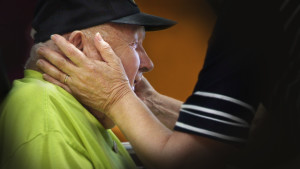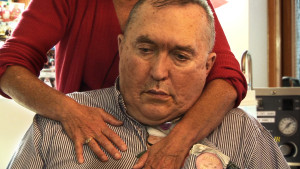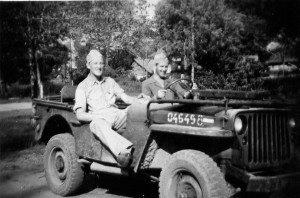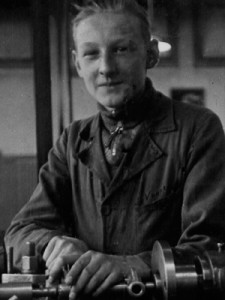Around 8,000 U.S., veterans a year kill themselves and many of those deaths are linked to PTSD, a lingering trauma that Go in Peace! renames Post Terror Soul Distress. These veterans typically isolate, they protect us from their pain, and we don’t know what to say or how to “be” around them.
My father, Jack, a charismatic, volatile, World War II veteran, with undiagnosed, untreated PTSD, is the inspiration for my film. I always felt so helpless around him, and I wish I had known then, when he was alive, what I know now… that there is HOPE for healing.
Jack was a Dutchman who grew up in occupied Holland, and like many veterans, he’d stuffed away the horrors he’d experienced in combat in a war he felt was “just.”
But when he was dying, those horrors rose to the surface. One day, he told me: When I was 14, me and my best friend strangled a German soldier in our village.” Jack then escaped to join the Allied Forces, and was eventually posted to Burma as a child soldier. He was six-foot tall and had lied about his age. My father told me that the teenage German guard he had killed was not much older than he was and “probably didn’t know why he was there.” But, as my dad put it, “He was the enemy, and we had to take him out.”
My father’s dying process was the trigger for his PTSD. As my father faced his own death, he saw the face of that young German soldier whose life he had taken in the most intimate of killings.
Jack had never shared anything about his wartime experiences. His “confession” woke me up to all he had carried inside for all those years, and to my inability to recognize his grief, and to create a safe environment for healing. In telling me this story of such an intimate killing, my father recognized, maybe for the first time, the human being in the first person he had killed. His sharing was a tacit plea for forgiveness.
Jack was able to take one huge rock out of his backpack before he died, even though there were many more.
THE ENCOUNTER WITH THE VA that led to the making of Go in Peace!
Jack died before I started making Go in Peace! so his story is not in the film. But Jack made it happen. One day in 2009, I was sitting with a group of hospice medical professionals at the VA Medical Center in Denver, Colorado. I had just shown them my first documentary, Dying Wish, the story of a dying doctor’s decision to stop eating and drinking at end of life. We were chatting at the end of the screening and I asked them what it was like caring for veterans at end of life. The protagonist of Dying Wish, Dr. Michael Miller, ends his life feeling complete in his relationships and at peace with his past. I wondered about the challenges of facing death without having resolved difficult and painful issues from earlier life.
The VA medical staff confirmed that the dying process for veterans was often complicated by the appearance of behavior related to trauma. Serious illness that wasn’t necessarily terminal, also triggered past trauma for veterans, resulting in behaviors which staff was often inadequately equipped to address. That’s when I thought, “Someone needs to make a film for caregivers, so they can better understand how trauma, especially that connected to the taking of life, can impact patient behaviors. Someone needs to make a film to highlight how caregivers can perhaps create environments in which these people can make peace with themselves, with others, and with the past.”

 Go in Peace! wasn’t the easiest film to make. It was challenging finding veterans who could illustrate the particular behaviors we wanted to highlight. But a few people were instrumental in providing opportunities to capture essential footage.
Go in Peace! wasn’t the easiest film to make. It was challenging finding veterans who could illustrate the particular behaviors we wanted to highlight. But a few people were instrumental in providing opportunities to capture essential footage.
GRATITUDE TO…
Deborah Grassman, former VA advanced registered nurse practitioner who connected me with Stein Hospice of Sandusky, OH.
Stein allowed us to film its extraordinary veterans’ care program, and moreover, to film Deborah Grassman and her team who traveled to Ohio to work with the residents of Ohio Veterans Home. Deborah Grassman and Stein Hospice made Go in Peace! possible.


